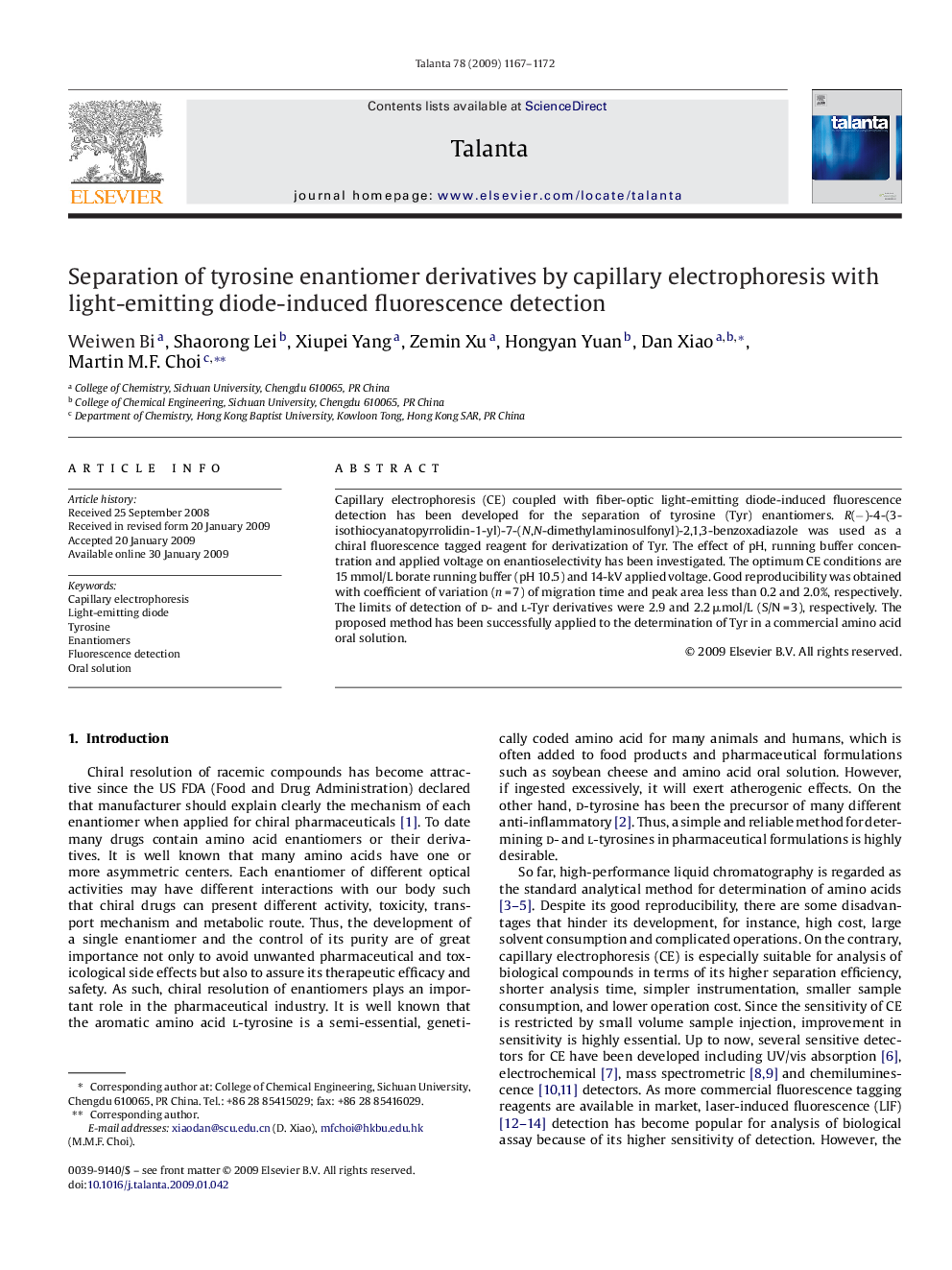| Article ID | Journal | Published Year | Pages | File Type |
|---|---|---|---|---|
| 1244962 | Talanta | 2009 | 6 Pages |
Capillary electrophoresis (CE) coupled with fiber-optic light-emitting diode-induced fluorescence detection has been developed for the separation of tyrosine (Tyr) enantiomers. R(−)-4-(3-isothiocyanatopyrrolidin-1-yl)-7-(N,N-dimethylaminosulfonyl)-2,1,3-benzoxadiazole was used as a chiral fluorescence tagged reagent for derivatization of Tyr. The effect of pH, running buffer concentration and applied voltage on enantioselectivity has been investigated. The optimum CE conditions are 15 mmol/L borate running buffer (pH 10.5) and 14-kV applied voltage. Good reproducibility was obtained with coefficient of variation (n = 7) of migration time and peak area less than 0.2 and 2.0%, respectively. The limits of detection of d- and l-Tyr derivatives were 2.9 and 2.2 μmol/L (S/N = 3), respectively. The proposed method has been successfully applied to the determination of Tyr in a commercial amino acid oral solution.
